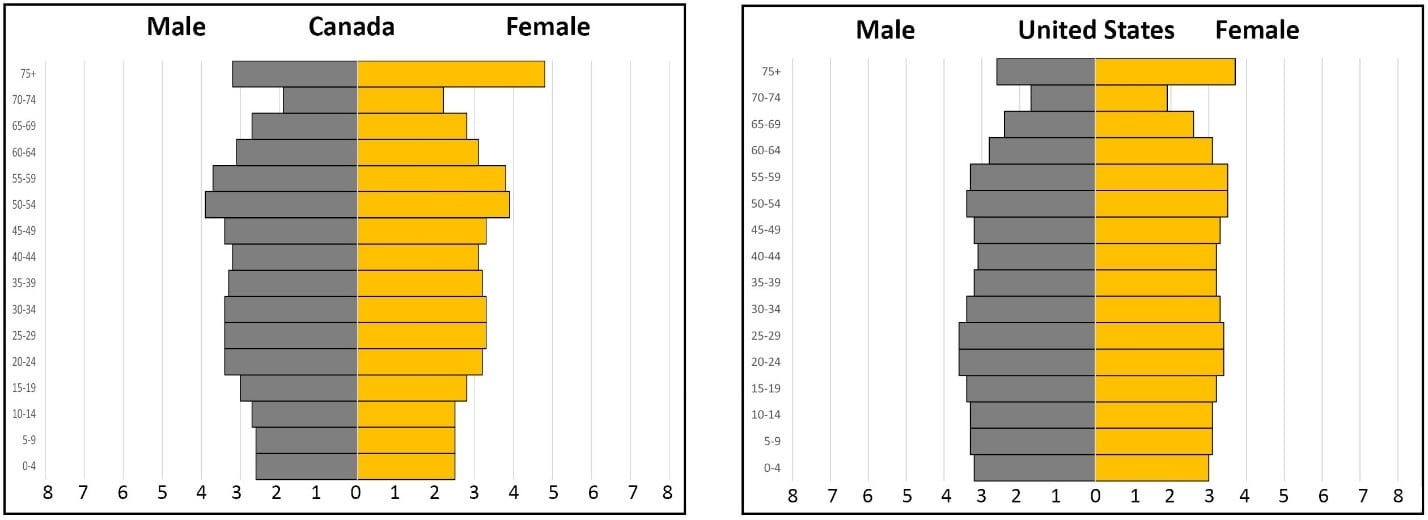In a previous post, we explored the U.S. baby boom generation over time – from 1980 to 2015 – as it is depicted in population pyramids. The baby boom population is evident on U.S. population pyramids because it’s where the pyramid is at its widest, indicating large populations within certain age cohorts. It can be pictured moving up the pyramid every 5 years as a swell in the pyramids — showing baby boomers progress from young age to old age, and then diminishing in size due to the size of other cohorts getting bigger, and baby boomers passing away.
The U.S. and Canada both experienced a baby boom during the same years, 1947-1964. However, if we look at the U.S. and Canadian population pyramids for today’s population, they present us with a curious case – the baby boom generation in the U.S. pyramid is fading while the baby boom generation in the Canadian pyramid remains prevalent.

There is no one reason why the baby boom generation on the U.S. pyramid is vanishing while the same generation on the Canadian pyramid remains pronounced, but let’s look at some factors that might be involved. According to Stat Can, during the baby boom years in Canada period more than 8.2 million babies were born. Comparatively in the U.S., there were 76 million births during the baby boom. But then again, the U.S. has a much larger population than Canada (322 million to Canada’s 35 million). Canada’s population is older than the U.S.’s and that might play a role – Canada’s median age is 40.5 to the U.S. median age of 37.7. Also, the life expectancy of Canadians is 82, and in the U.S. it is 79.
All interesting stats but none that singularly tell us why the baby boom generation manifested differently on the U.S. population pyramid and the Canadian counterpart. It’s a curious case.


